MARIANI’SMay
11, 2008
NEWSLETTER
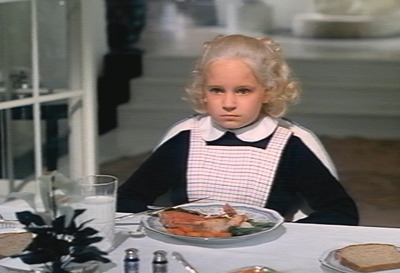
Mara Hobell as Joan Crawford's daughter in "Mommie Dearest" (1981)
HAPPY MOTHER'S DAY!
NEW! Click esquire.com
to go to my new column at Esquire Magazine.
ARCHIVE: Readers may now access
an
Archive of all past newsletters--each annotated--dating back to July,
2003, by simply clicking on www.johnmariani.com/archive
Restaurant
Index: A complete list of restaurants covered in this newsletter
since 2003. Please
click here.
SUBSCRIBE AND
UN-SUBSCRIBE: You may subscribe anyone you wish
to this newsletter--free of charge--by
clicking here.
In
This Issue
NEW YORK CORNER: TOLOACHE by John Mariani
NOTES FROM THE WINE CELLAR: PORTUGUESE WINES READY FOR THEIR CLOSE-UP
by Brian Freedman
QUICK BYTES
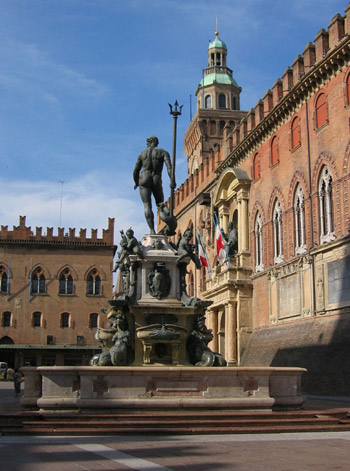 Tasting
Bologna
Tasting
Bologna BY MARIANNE CAMARDA
If Italy
is the world's kingdom of great food,
then Bologna is the culinary capital of that kingdom. This tiny
medieval principality has long been recognized as the country's
unofficial epicurean center for good reason. Every street in the old
district is a fantasy of things to indulge in, from fresh produce
to pastry and artisanal pasta. The rest of the town runs a close
second. Still, the best way to learn about Bologna’s culinary
profile is to eat your way through all of it. That's precisely
how I filled three delectable days.
Bologna is located in Emilia Romagna
and
one of the oldest cities in Europe, the first to have a university, and
the first to make significant contributions to Italian cooking. Aside
from its culinary magnificence, Bologna is also famous for its 25 miles
of sprawling medieval porticoes and well-preserved ancient
watchtowers. The most famous of these are the slightly torqued
pair referred to as Two Towers of Bologna.
Fontana del Nettuno
I was particularly pleased on this trip,
because I got to stay at the Grand
Baglioni hotel (51-225445),
located in a magnificently restored palazzo on the Via
Indipendenza. Actually, the Baglioni (below) is more of a castle for
hire, where at the end of your stay you exchange money in return for
being treated like the member of a royal family. In addition to
impeccable service, (the porter seems to always recognize you from half
a mile away), the place is an architectural treasure of frescoed
ceilings, winding marble staircases, impressive colonnades, and in
the dining room cinquecento frescoes by the Caracci
brothers. In the bedrooms baroque paneled walls, canopied beds,
and crystal chandeliers are standard fare, as is an endless stream of
marble in the bath. My room was so spacious that I could barely
see the TV from my bed. 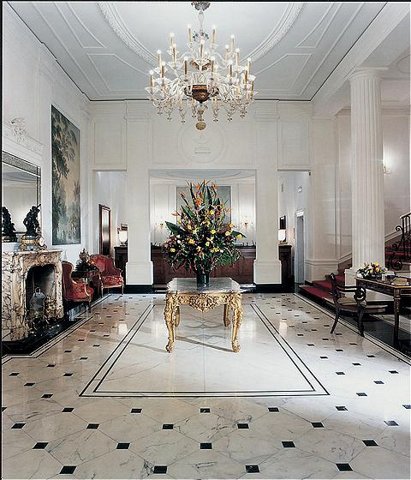 I had to get up and migrate to a plush
armchair to get a good look at the local station. An
inconvenience I never have to put up with that at home.
I had to get up and migrate to a plush
armchair to get a good look at the local station. An
inconvenience I never have to put up with that at home.
The city has a rich gastronomic history and
lore, from the time of the Etruscans. Remains found in the
nearby Po valley indicate that the Etruscans cured the back legs
of pigs here, as in the making of modern-day prosciutto. There are
similar antecedents to salamis like mortadella, cotechino, and numerous
varieties of sausage.
First, I canvassed around for the best
place to sample Bolognese cuisine and was directed by more than one
source to the Trattoria al Caminetto
d'Oro (Via
de'Falegnami, 4; 51.263.494)
a spot
where I had no trouble packing away a meal that lasted four-and-a-half
hours. Caminetto d'Oro occupies two simple but elegant storefront
rooms (below) on a side street
of the Via Indipendenza. As with many
restaurants in Italy, the establishment is family run; in fact, if you
phone for reservations before noon, the family matriarch and chef de
cuisine, Maria Carati, will probably answer. Don't let her warm,
maternal manner fool you: in the kitchen, this woman is a dynamo.
Maria
and her husband Gino opened this
spot in the 1980s after spending careers in the restaurant
business. He came from a family of bakers, and she had cooked in
some of the best small kitchens of Emilia Romagna. As a native of
that region, Maria keeps Emilian cuisine upstage on her menu, though
she gives fair time to specialties of Abruzzo, where Gino's heritage
lies. I was completely blown away by an amuse bouche of passata di porri. In English,
that might translate as pure bliss with leeks and zucchini.
Smooth, velvety green froth was fragrant with creamy leeks and topped
by a buttery crouton. The aromatics floated through in a mix of
other rich tastes that I may never be able to pinpoint.
Next up was fegatelli,
an Italian version of chicken liver pâté, which escalated
this household basic to new heights. Its nutty flavor had
delicious top notes, as though the meat has been roasted over an open
spit with a dousing of fine cognac. It was lightly caramelized,
and in perfect counterpoint to the creamy dab of fresh Dolomite butter
that I smeared on my toast points. The wine was a smooth and
balanced Centurione San Giovese 2004 from one of the many small
wineries and organic vineyards patronized by the owners, who try to
avoid big wine producers. Following was raw beef "alla battutta," a thin slice of
meat with a fragrant aroma; it melted on my tongue as if that were its
sole purpose on the planet. It was a pleasure to slowly devour one
morsel at a time.
Still, the highlight of the evening was the polpetta di manzo, which had about
as much to do with the kind of meatball you'd find in the States as
Madison Square Garden is a replica of the Coliseum. I could tell
it was a masterpiece just by looking at it. A circle of red
pepperoncino sauce was drizzled around the edge, followed by a band of
crisp, thin-sliced potato, all topped off with gorgeous, shimmery
chunks of roasted artichoke. My massive, fragrant polpetto was crowned by a fresh
quail egg, letting off an aroma that was driving me nuts.
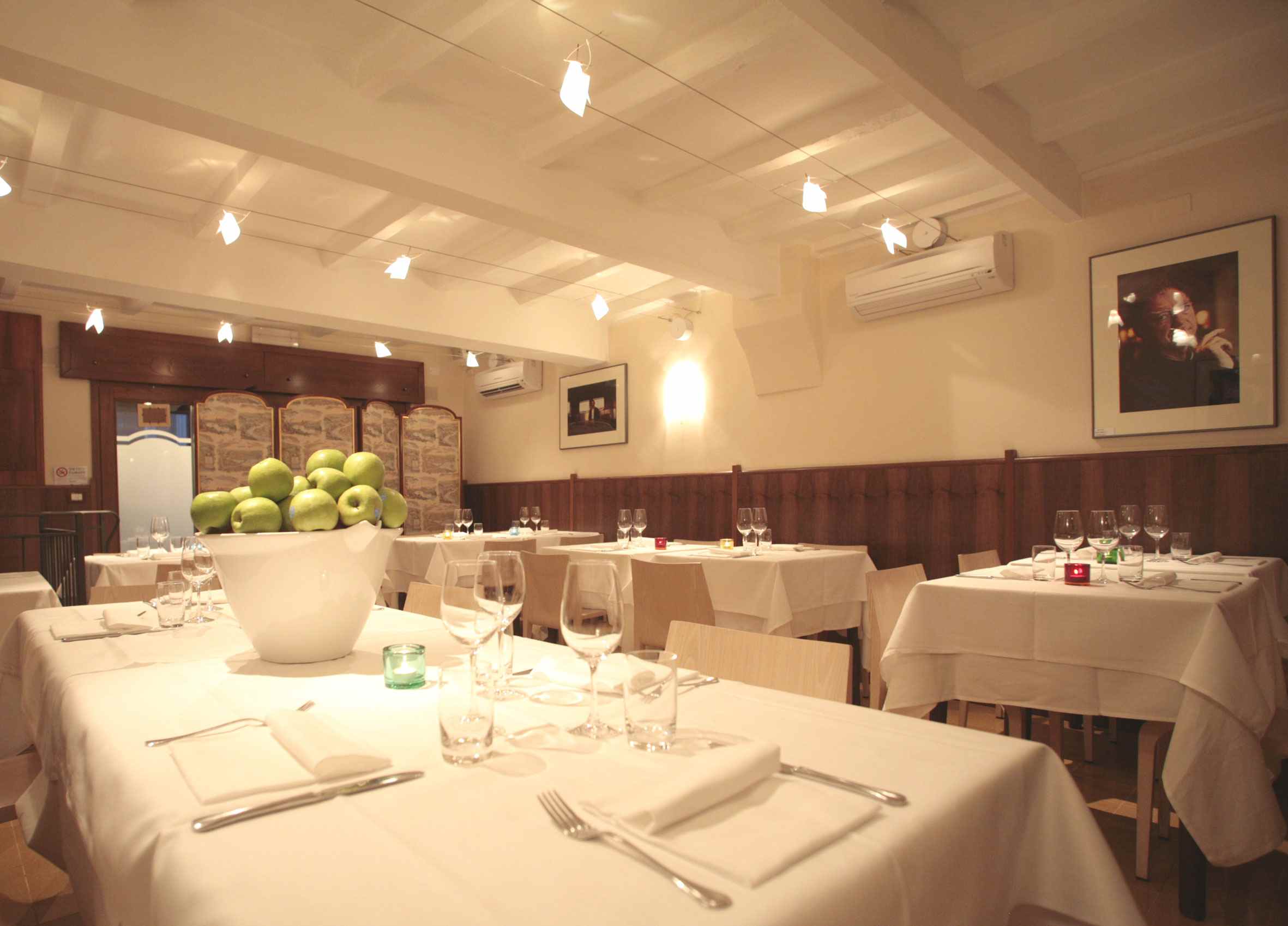 By
that point, dessert seemed like the
least likely thing to happen, but lo and behold, the signora came out
from the kitchen in full chef de cuisine regalia to see if she could
fix me something dolce.
I took one look at that lovely face, and thought about the likelihood
of ever having this chance again, and found I couldn't say no. In
fact, I think a good mantra for dining in Italy is to just, never say
no. Tell this to yourself over and over everywhere you eat and
you will always be grateful. So I went for panna cotta. And, sure
enough, I will now express exponential gratitude. Juicy chunks of
fresh, garden-grown berries with just a drizzle of fruit compote were
strewn across a slice of cream-laden lightness. I'd never had
anything like it before, and don't know if I will again. Those
who think a good panna cotta
is simple and easy to replicate have much to learn, though I doubt the
chef will be giving away any secrets on this one.
By
that point, dessert seemed like the
least likely thing to happen, but lo and behold, the signora came out
from the kitchen in full chef de cuisine regalia to see if she could
fix me something dolce.
I took one look at that lovely face, and thought about the likelihood
of ever having this chance again, and found I couldn't say no. In
fact, I think a good mantra for dining in Italy is to just, never say
no. Tell this to yourself over and over everywhere you eat and
you will always be grateful. So I went for panna cotta. And, sure
enough, I will now express exponential gratitude. Juicy chunks of
fresh, garden-grown berries with just a drizzle of fruit compote were
strewn across a slice of cream-laden lightness. I'd never had
anything like it before, and don't know if I will again. Those
who think a good panna cotta
is simple and easy to replicate have much to learn, though I doubt the
chef will be giving away any secrets on this one.
Of course, by the end of the evening, it felt like
everyone was my lifelong friend: Maria's son, Paolo, who runs the
place, along with his delightful wife Flavia, and their two children
who wait on the tables. Not to mention Gino, who bakes the bread
and all the pastas, and the queen of the kitchen, Maria Carati.
Like many of Italy's family-run restaurants, Caminetto d'Oro is a labor
of love hard to replicate on this side of the ocean. Antipasti here run 10-12 euros, pastas
10-14 euros, main courses 18.50-20 euros.
My second day involved visiting the famous food
shops that dot Bologna's oldest streets. They cluster around the
medieval crossways near Piazza Maggiore, primarily via delle Vecchie
Pescherie and the via Caprarie. You can tell from the swelling
outline of the buildings that these passageways are at least five
hundred years old, their beautifully aged stucco structures are wilting
with years and crouch over the tiny cobbled walkway below.
I was particularly struck by the fruit vendors
on Vecchie Pescherie. Though all the sellers close shop midday
for a 4-hour lunch break, no one is afraid of thievery. They just
put up a sign that reads, "out to lunch," and throw a sackcloth
over the produce. The stacks of fresh goods are hard to
believe. Gorgeous purple, red, vibrant green, shades of
vegetables and fruits I know I may never see again: Not just one
type of radicchio, but radicchio di Trevisano, radicchio di Mantovano,
radicchio di Viserbo, then, finally, regular radicchio, and an
announcement that the carciofi di Puglia were available.
A few meters away is where the seafood
vendors start. Even though there are a number of fresh fish sellers in 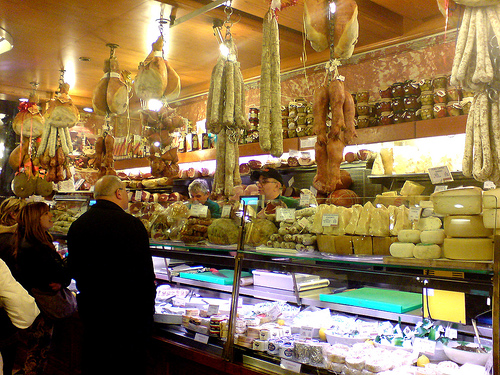 this 'quartiere', everyone
seems to crowd in to one (the best of course) -- Italian
style. Its name is Brunelli, and customers push and jostle like
Yankee fans on line for opening day. They're vying for first dibs
on items that I’d never seen or heard of, like sgombi adriatici, cefali, candocchie,
totani adriatici, and on and on. I feel like I must never
have seen a real fish market before, with my naive vocabulary of
shrimp, mussels, flounder and salmon steak. There were easily 100
species of shimmering, fresh-caught ocean life laid out for all to
marvel at.
this 'quartiere', everyone
seems to crowd in to one (the best of course) -- Italian
style. Its name is Brunelli, and customers push and jostle like
Yankee fans on line for opening day. They're vying for first dibs
on items that I’d never seen or heard of, like sgombi adriatici, cefali, candocchie,
totani adriatici, and on and on. I feel like I must never
have seen a real fish market before, with my naive vocabulary of
shrimp, mussels, flounder and salmon steak. There were easily 100
species of shimmering, fresh-caught ocean life laid out for all to
marvel at.
Next
up, I dropped in on Tamburini (via
Caprarie, 1; 51-234-726; right ), which I was told is the most
famous salumeria
in the region. It's a family-owned operation that started out
several generations back as a purveyor of cured meats. Today, the
family’s sprawling food shop is adjacent to a wine bar. The
storefronts are connected for good reason: it's hard to shop in
Tamburini without becoming incredibly, uncontrollably hungry. The
store's masterpiece is its homemade tortellini (below), and it is a privilege
in Bologna to be known for such things. I soon learn that this
town is tortellini’s birthplace, and the Bolognese will never, ever let
you forget it. Giovanni Tamburini, one of the brother/owners, is
a tall, large-framed framed man with sandy blond hair and a round face
that captures the ideal jovial Italian. He was delighted to set
me straight on the topic, and offered his perspective.
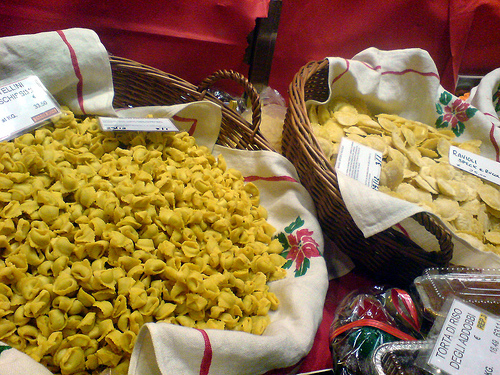 When
we nestled into a table at the bar for
lunch, a good half-dozen customers chimed in a familiar greeting to
him. It seems that mingling over a meal is a regular activity here.
First, Giovanni explained that tortellini are made only with specific,
top quality ingredients, according to a strict recipe. No matter
that the formula changes from one small town to the next; we were here
to witness the classic from Bologna. It's more or less equal
parts lombo (or flank of
Italian pork), prosciutto, and parmigiano aged for 3 years. If by
chance your cheese is younger than three years--(Giovanni was quick to
point this out--the quantity would have to be adjusted! I made
the appropriate notation in my notebook.
When
we nestled into a table at the bar for
lunch, a good half-dozen customers chimed in a familiar greeting to
him. It seems that mingling over a meal is a regular activity here.
First, Giovanni explained that tortellini are made only with specific,
top quality ingredients, according to a strict recipe. No matter
that the formula changes from one small town to the next; we were here
to witness the classic from Bologna. It's more or less equal
parts lombo (or flank of
Italian pork), prosciutto, and parmigiano aged for 3 years. If by
chance your cheese is younger than three years--(Giovanni was quick to
point this out--the quantity would have to be adjusted! I made
the appropriate notation in my notebook.
To help me sample the real thing, the kitchen
brought out a steaming plate smothered in ragù. Of course,
I was promptly informed that by tradition tortellini should be eaten
only in broth; so one can savor the delicate mix of flavors. They were
violating protocol for me because they wanted to cook something up on
the spot. Tamburini assured me that although his shop is famous
for its tortellini, he refuses to export them, as small-batch
production is essential to quality. Welcome to competitive
marketing Italian style.
The tortellini were incredible indeed: meaty
and firm, with an al dente shell, and stuffed with a blend of meats and
spices that made me want to just sit back and inhale deeply. I
could see why one wouldn't normally cover them with a
ragù. There’s such a complex interplay of flavor and aroma
that you'd never want to complicate the picture. Paired with a
ruby-colored glass of Terre Rosse, it was the type of Italian lunch I
usually dream about. I could have spent the whole day gabbing
about Italian food with Giovanni. In fact, I was invited to
return the following Saturday to watch the guys who make the tortellini
by hand. Couldn’t think of a better reason for sticking around.
If only.
As a final stop I couldn't pass up a visit to
the beautiful belle-époque Pasticceria
Paolo Atti e Figli (Via
Drapperie, 6; 233-349). While adults will appreciate the
pure confection of
its antique store front, I can guarantee that children 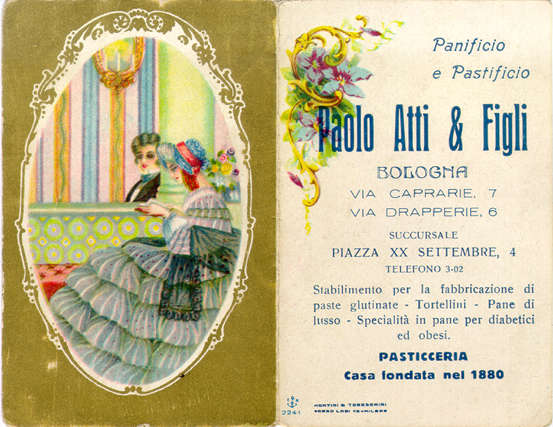 will go wild
over the fantasy world of goods that fill out the shelves. The
shop is run by the Atti family's current matriarch, Anna Maria Bonaga
Atti, with her husband Romano. Their legacy goes back 100 years,
when Paolo Atti opened his first bread shop, the Forno
Piemontese. Every nook of this delightful store was crammed with
breads of all shapes and sizes, as well as at least 20 types of
homemade pasta and an array of specialty flours (apparently, some
people come here just for the raw baking materials).
will go wild
over the fantasy world of goods that fill out the shelves. The
shop is run by the Atti family's current matriarch, Anna Maria Bonaga
Atti, with her husband Romano. Their legacy goes back 100 years,
when Paolo Atti opened his first bread shop, the Forno
Piemontese. Every nook of this delightful store was crammed with
breads of all shapes and sizes, as well as at least 20 types of
homemade pasta and an array of specialty flours (apparently, some
people come here just for the raw baking materials).
A
glimpse at
the pastry selection would make anyone feel like they were six
again. Every shiny, colorful gem was crafted to perfection and
sitting out with a glistening coating, with names like certosino panspeziale (a
cooked candied fruit and specialty of Bologna), crostate biondi e mora, tartufini, baci di
dama, craccanti di cioce, profiteroli, girandole, torte napoletane --
you get the idea. You head would be spinning before you could
possibly get it all straight.
Though the house specialty appears to be bread and
pastry, the Atti shops (there are two within a few meters of each
other) also specialize in tortellini. Here, I am told, you can
find a limited amount of exportation. A number of prominent
restaurants in the US and other nations serve their tortellini imported
straight from the Atti workrooms. I think that importing is a
must, as the likelihood of finding this caliber of product outside
Italy is next to nil.
As with so much of the city, it’s hard
to walk into an emporium like Atti and walk out on an empty
stomach. At least if you are human. But if you want to
sample some of the finest food to ever grace the planet, you have a
very good reason to visit Bologna. And once there, the more human
you are, the better.
Marianne Camarda is a freelance writer who
lives in New York City. Her work has appeared in Chile
Pepper, the Brooklyn Eagle, Diversion, Elle, Wine Country
International, House Beautiful, and Delectable
Magazine, among others.
~~~~~~~~~~~~~~~~~~~~~~~~~~~~~~
NEW YORK CORNER
by John Mariani
TOLOACHE
251 W. 50th St. (near Broadway)
212-581-1818
www.toloache.com
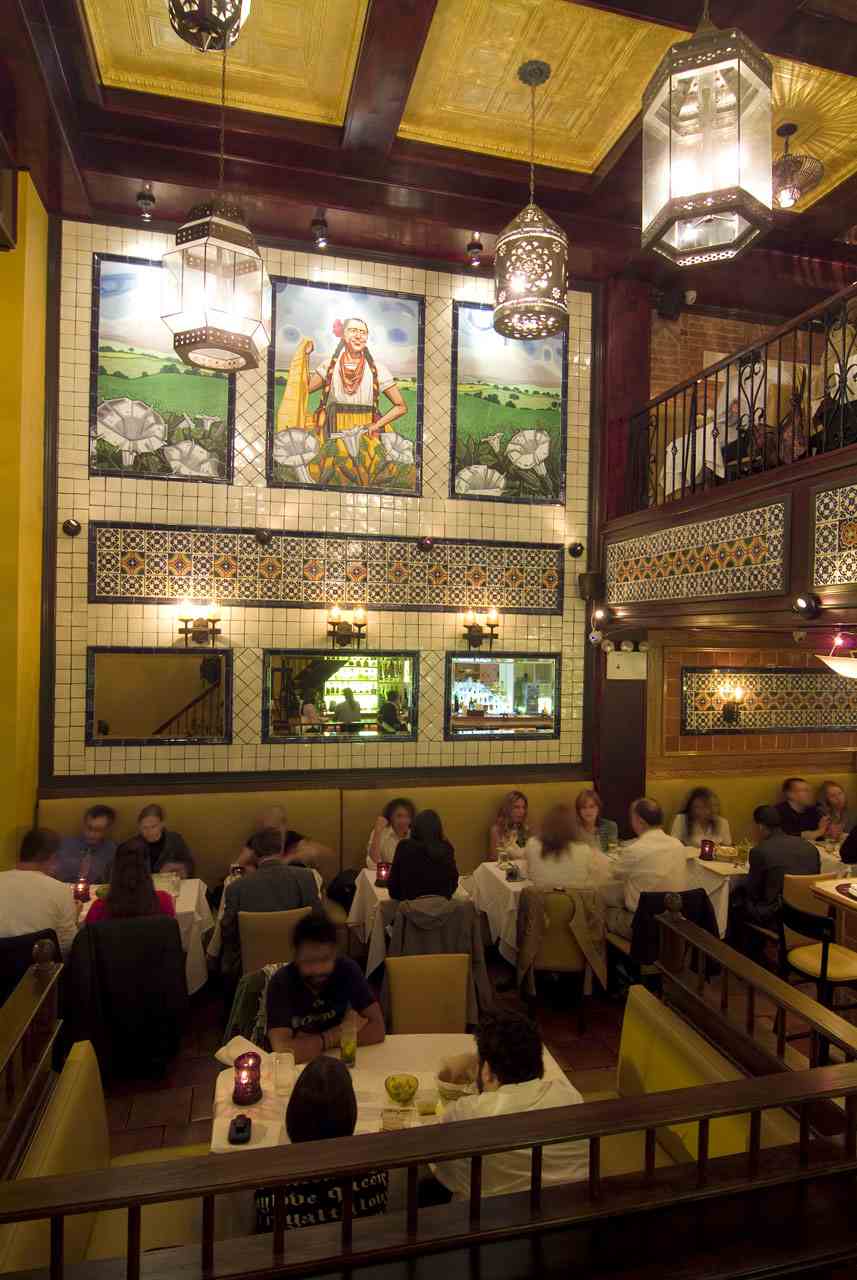 Having
just returned from a week in Mexico where I ate Mexican pretty much
three times a day, I wasn't really ravenous for another platter of
enchiladas and refried beans. But, knowing the reputation of
chef-owner Julian Medina, who trained in Mexico City and was brought to
NYC in 1996 by Richard Sandoval to cook at Maya and late became chef at
Zocalo, I suspected the food would be quite a bit different from what
I'd been eating for the past week. I was not disappointed.
Having
just returned from a week in Mexico where I ate Mexican pretty much
three times a day, I wasn't really ravenous for another platter of
enchiladas and refried beans. But, knowing the reputation of
chef-owner Julian Medina, who trained in Mexico City and was brought to
NYC in 1996 by Richard Sandoval to cook at Maya and late became chef at
Zocalo, I suspected the food would be quite a bit different from what
I'd been eating for the past week. I was not disappointed.Toloache, named after a flowering Mexican plant "used in love potions," is a splendid-looking two-storied restaurant with 90 seats. Downstairs there is a lively ceviche bar that makes for a terrific pre-theater dinner, and upstairs a more conventional dining room with beautiful tilework, rich earth colors, and Mexican folkloric murals. Also, thank heavens, Toloache has bright white tablecloths, which have become a rarity these days in NYC restaurants. The service staff couldn't be nicer or more informed about the menu and the list of nearly 100 tequilas, mezcals, and cocktails, and the noise level is highly conducive to normal conversation. The margaritas (try the one made with Don Julio 1942) are very well made indeed.
If Mexican food is sadly predictable in most cases, Toloache's proves otherwise. The ceviches are outstanding, from the hamachi with Meyer lemon, avocado leaf oil, cucumber, red onion, and salsa with crispy avocado. Also very good is the spicy yellowfin tuna with Vidalia onion, radish, and watermelon that gives it a cool twist.
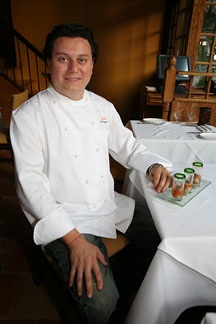
The small plates--botanos--I enjoyed included a clever take on corn cakes made with a form of Mexican ricotta and topped with a quail's egg and salsa ranchera. You can already see what I mean about the food being clearly, authentically Mexican but in no way predictable. They also make a terrific trio of guacamoles that brings that dish into a whole new sphere of diversity, including one made with fruits like mango, apple, and peach, flavored with basil.
Los tacos is a separate section on the menu, made with handmade tortillas (and believe me, those items are getting to be rare in restaurants in Mexico). We loved the braised veal cheeks with onion, cilantro, and a rich chile de arbol salsa, as well as a nicely assertive carne asada, in which skirt steak is rubbed with chile and served in a hot taco with pickled red onions and pulque salsa borracha ("drunkard's style").
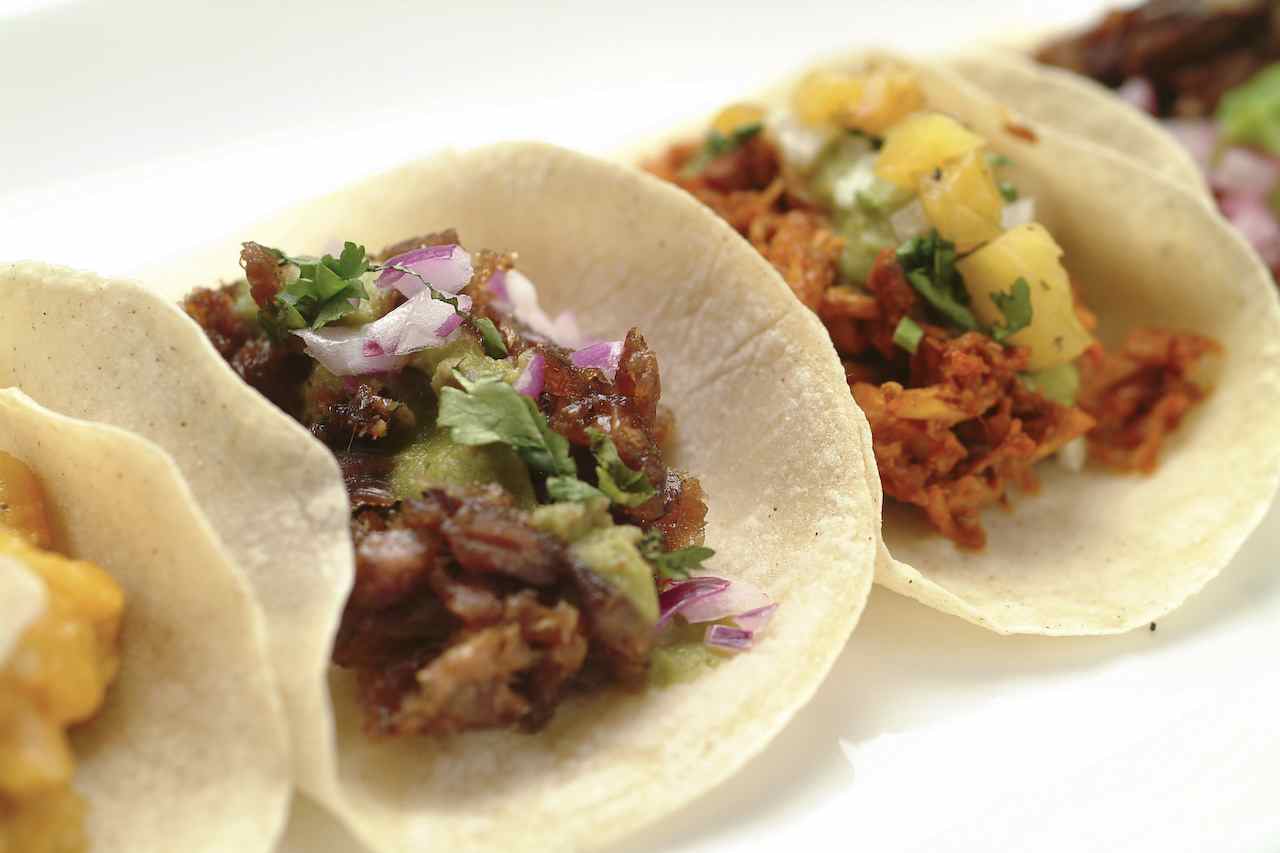 Downstairs
there is a brick oven, which is itself unusual for a Mexican
restaurant. At Toloache they use it to make queso fondido, chicken quesadillas,
and my two favorites, a quesadilla of braised short ribs with Chihuahua
cheese and chipotle barbecue sauce, and another with manchego cheese
and huitlacoche, the corn
mushroom fungus with its earthy, subtly smoky flavors.
Downstairs
there is a brick oven, which is itself unusual for a Mexican
restaurant. At Toloache they use it to make queso fondido, chicken quesadillas,
and my two favorites, a quesadilla of braised short ribs with Chihuahua
cheese and chipotle barbecue sauce, and another with manchego cheese
and huitlacoche, the corn
mushroom fungus with its earthy, subtly smoky flavors.Among the main courses I recommend the perfectly rendered roast suckling pig (from that brick oven), which is shredded and glossed with a habanero-sour orange salsa, and accompanied by a cooling avocado-chicaron salad. Braised short ribs are treated to the tang of pomegranate, with a celeriac puree and chile ancho glaze, while tuna is rubbed with seven chilies, yet it keeps its essential sea flavor, served with corn, chorizo, and a tequila-chipotle glaze.
If you have room for dessert go with the soft chocolate torta or the traditional flan, which are particularly original but are very good.
With chef de cuisine Carlos Barroz, Medina is showing that Mexican food is not just capable of diverging for the formulaic but has evolved into a cuisine of refinement and finesse without losing its spicy soul. I wish there were more restaurants in Mexico, Texas, and the Southwest doing food this tasty, this smart, and this personalized.
Toloache is open for lunch Mon.-Fri., Brunch Sat. & Sun., and dinner nightly. Appetizers at dinner run $8-$13, ceviches $10-$17, and main courses $8-$27.
NOTES FROM THE WINE CELLAR
PORTUGUESE WINES ARE READY FOR
THEIR CLOSE-UP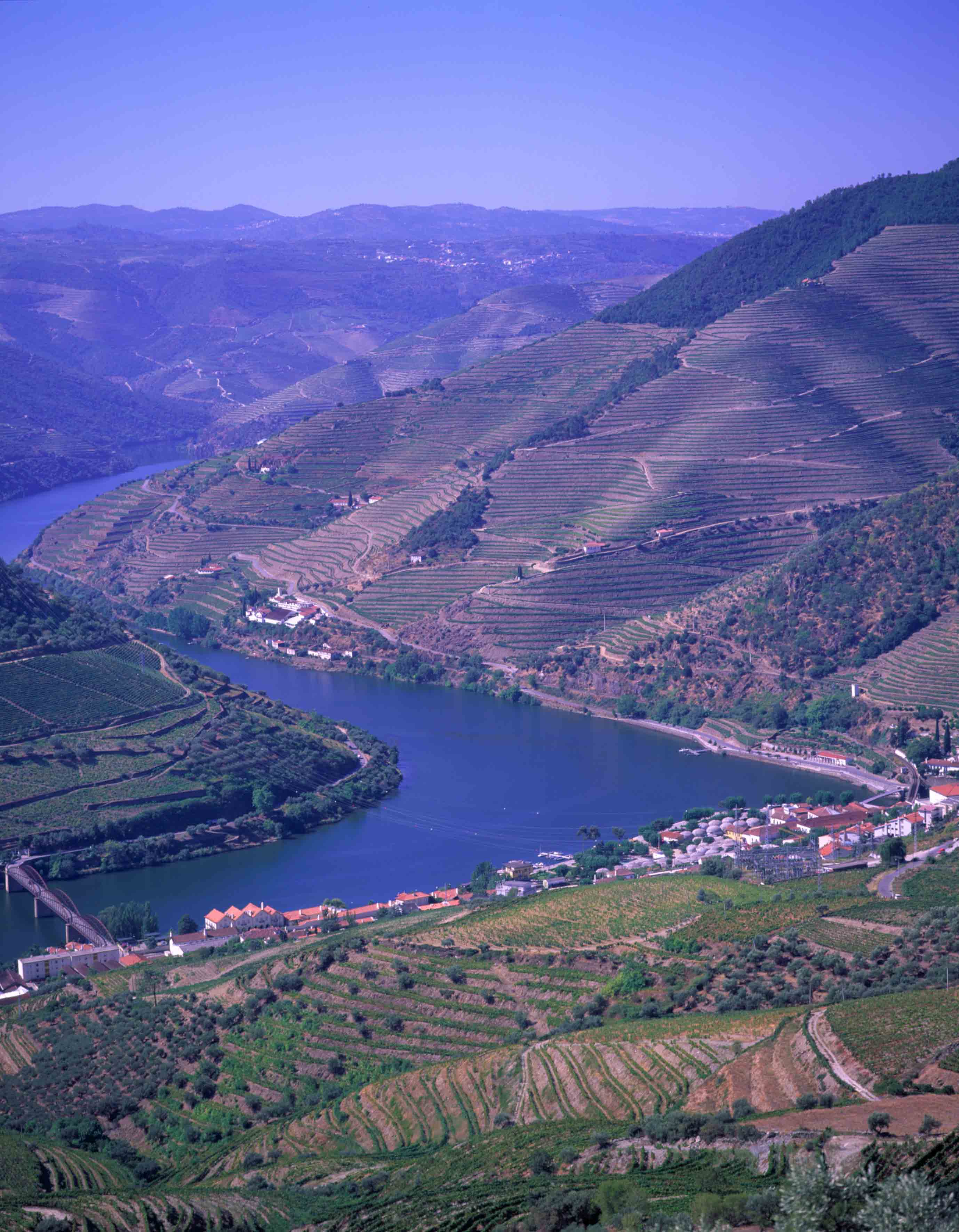
by Brian Freedman
The Douro River
For
centuries, the Portuguese wine industry has been defined by Port. And
while few would argue with the resounding success Portugal has
historically had with all things sweet and fortified, it nonetheless
deserves more credit and attention for its dry wines, too.
The problem—as is the case with wines from so many countries and
regions that the wider wine-drinking public is not terribly familiar
with—is both finding them in the first place, and knowing what to look
for when you do come across a wine shop that carries more than a few
bottle.
In terms of this first issue, the situation is
improving all the time. As the dollar grows ever weaker against the
Euro, merchants are having to look to wine-producing regions in Europe
that have not traditionally had a great deal of success or exposure on
this side of the Pond. Expect to see more and more bargains from places
you didn’t even know grew grapes in the coming months and years. And
while it’s unlikely that your local store will begin to carry more
Portuguese wines than French, the wines have become significantly
easier to find lately.
As for the second problem—knowing what to look
for—learning the basics is not as difficult as it is with some other
parts of the wine world. Portuguese wine lingo and geography are,
thankfully, relatively easy to grasp: No complicated, German-style
labels; no obscure, Burgundy-like place-names to wade through. A bit of
familiarity with the key regions and grape varieties is all that’s
necessary to begin taking full advantage of these underappreciated
wines.
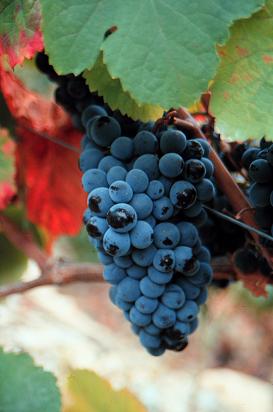 Reds from
Alentejo, a surprisingly successful wine-growing region in the hot, dry
southern part of the country, are relatively easy to find, and what
they lack in name-recognition they more than make up for in easy
drinkability and excellent value. Because of this, they offer some of
the best wine bargains in a country overflowing with them.
Reds from
Alentejo, a surprisingly successful wine-growing region in the hot, dry
southern part of the country, are relatively easy to find, and what
they lack in name-recognition they more than make up for in easy
drinkability and excellent value. Because of this, they offer some of
the best wine bargains in a country overflowing with them.
I recently tasted two wines from the Alentejo, and
while neither one blew me away, they were both exceptionally drinkable,
undeniably pleasant bottles. And because the region is home to so many
grape varieties that may not be familiar to most people—herbaceous,
spicy trincadeira; aragónez (more commonly known as
tempranillo); and a bit of touriga nacional, among others—they offer
the chance to taste something new.
Foral de Évora’s 2004 Tinto has a nose of
ripe cherries, dark berries, and a strong garrigue aroma that reminds
me of nothing so much as grenache (likely the result of the alicante
used in the blend, one of whose parent varietals is, not surprisingly,
grenache). On the palate, the wine is very well balanced, with notes of
cranberries, cigar tobacco, and dried Sicilian olives.
The other Alentejano red, Fundação de
Almeida’s Adega da Cartuxa Tinto 2006, shows notes of grilled
herbs, cranberry, and a not-unpleasant rubber aroma. There is a real
sweetness to the fruit in this wine, which eventually evolves into
something resembling a strawberry Fruit Roll-Up (but in a good way).
For all of its fruit, however, there’s excellent concentration, too,
and a surprisingly solid sense of grip.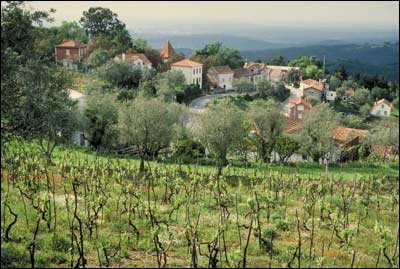
Of
course, despite the historical importance of local grape varieties in
Portuguese wines, there are some very nice bottlings being produced
from non-native ones. The Campolargo Tinto 2004, for example, is 100%
pinot noir. And while none of the best producers in
Vosne-Romanée or the Willamette Valley should feel threatened by
it, this wine offers all the pleasure of varietally accurate pinot noir
at a fraction of its usual price.
Despite its edge of rusticity, this pinot from the
Bairrada region in the north of the country exhibits a pronounced
floral perfume along the lines of slightly dried lavender, as well as
bright acidity, cherries, and mushrooms. It may not be all that
complex, but it certainly seems custom-made for the warmer days of
spring.
Not all the still reds of Portugal are crafted in
this vein, however. The Dão region’s Sociedade Agricola de Casal
Tonda Quinta dos Grilos Tinto 2005 is a deep, aromatic wine with a
polished and somewhat vanilla-rich palate that is far more subtle than
the ripe plum, thyme, black pepper, and chocolate of the nose. And the
Quinta de la Rosa Aguia Tinto 2005 from the Douro region, produced from
tinta roriz (better known as tempranillo), touriga franca, and the king
of Portugal’s native grape varieties, touriga nacional, starts off
almost overwhelming oaky but quickly develops unexpected flavors of
plum, tar, and truffle.
In that regard, at least, the Quinta de la Rosa is a
fair symbol for the red wines of Portugal: Easy to enjoy, true to its
origins, and a lot more interesting than you might initially expect.
Port may be the most well-known wine here, but the dry reds, now more
than ever, are worthy of renewed attention.
Brian Freedman is food and wine editor of LifeStyle Magazine (www.lsmagonline.com), restaurant critic for AroundPhilly.com and AroundAC.com, director of wine education at the Wine School of Philadelphia and editorial director at ClassicWines.com.
~~~~~~~~~~~~~~~~~~~~~~~~~~~
EASY
NOW, CLIVE!
"I have loved red Burgundy for decades, ever since the first really great Pinot Noir passed my lips. Who could fail to be entranced? Here is a wine which can sing like a nightingale, shine forth like a sapphire, intrigue like the most complex of chess problems and seduce like the first kiss of someone you are just about to fall in love with. "--Clive Coates, The Wines of Burgundy.
 MAYBE ALL THOSE CRUMBS
IN BED WERE A TURN-OFF
MAYBE ALL THOSE CRUMBS
IN BED WERE A TURN-OFF
When Madonna's husband Guy Ritchie went on the Cookie Diet,
which Kelly Clarkson and Jennifer Hudson had followed, she told a
Phoenix
radio show she was not happy: "My husband went on that Cookie Diet and
it was such a turn-off because he didn't want to have sex. He did lose
weight but he didn't really need to lose that much weight.” In
response Dr. Sanford Siegal, who created the Cookie Diet in 1975, said,
he has "treated more than 500,000 patients" and he "can't recall any of
them reporting a similar effect on their sexual appetite."
QUICK BYTES
* On May
15, at Charlie Palmer Steak in Washington DC, Share Our Strength will
gather 9 chefs to create a 5-course menu paired wines for “A Tasteful
Pursuit®.” Chefs incl. Jeffrey Buben, Bistro Bis; R.J. Cooper,
Vidalia; Roberto Donna, Galileo and Bebo Trattoria; Todd Gray,
Equinox; Brian McBride, Blue Duck Tavern; Michel Richard,
Citronelle and Central; Bradford Thompson, James Beard Winner, 2006
Best Chef Southwest; Chef Bryan Voltaggio, Volt Restaurant.
* The Hôtel Le Bristol Paris has
announced upcoming dates for their “Fashion High Teas.” This
summer, Le Bristol welcomes designers Azzaro and Ungaro. During the
shows, guests will also enjoy English tea and French pastries and
finger sandwiches by Pastry Chef Laurent Jeannin, inspired by the
designer being featured. The Azzaro show will be held
on May 24 and the Ungaro show will be held June 28; 50 Euros pp. Call
33 (0)1 53 43 43 42 or by visiting www.lebristolparis.com
• On May
19 Wine Enthusiast’s annual
epicurean evening of wine, food and soft jazz will be held in Lincoln
Center of the Performing Arts. International wine and spirit
companies will pour more than 500 of their premium products, and over
30 top New York restaurants will be showcased.
VIP Tasting
$185, Grand Tasting, $95.
Silent auction
to benefit: City
Harvest and the Food Bank For NYC. Visit
www.toastofthetown.com or
call 800-847-5949
Other Cities: San
Francisco: March 27; Atlanta: April 17; Chicago: May 1.
• On May
20 Dish du Jour Magazine
hoists the first Burger Battle of the
Boroughs at their 7th annual Cuisine of Queens & Beyond 2008
Food and Wine Gala at the Astoria World Manor, Astoria, NY. Each
borough, except Staten Island, will have a representing burger
submitted to a panel of celebrity judges incl. Chef Terrance
Brennan of Picholine, Restaurant and Artisanal Cheese & Wine
Bistro, Arthur Schwartz, The Food Maven, Josh Ozersky, online food
editor for New York Magazine’s Grub Street, Kelly Choi, producer and
host of Eat Out New York on NYC TV, and Tony Tantillo, CBS2 HD Food
Expert. The event will showcase cuisine from over 50 local restaurants,
gourmet shops, bakeries, wine and beer companies. $55 pp in
advance; $65 at the door. Call (718) 777-7918 or visit
www.dishdujourmagazine.com
* Every Wednesday night is
now "Caviar Night" at Petrossian
in NYC, with a prix fixe of $95 pp that incl. Petrossian’s Royal
Transmontanus and Alverta™ Caviars served with freshly made blinis and
toast points, an assortment of Petrossian’s zakouskis (a variety of hors
d’oeuvres), all topped with Paul Georg Champagne and Petrossian Vodka.
Call 212-245-2214.
* On May 29 in
Charlotte, NC, M5 Modern
Mediterranean restaurant has announced a wine dinner on
featuring BR Cohn wines. Hosted by Dan Cohn, National Marketing
Director, the 5-course menu created by Executive Chef Tom Condron will
be paired with select BR Cohn wines. 75 pp. Call 704-909-5500.
* Linda and Ted Fondulas,
owners of Hemingway's in
Killington,
Vermont, will conduct a Food Odyssey in central Vermont from May 31 to
June 1, incl. cooking classes, wine tastings, visits to farmsteads and
artisan food and beverage producers, food tastings, gourmet dinners,
picnics, and wild edible forages. Call 802-422-3886.
* From June 1-4 the BROADMOOR
will be hosting grilling authority
Steven Raichlen’s Barbecue University ™ in Colorado Springs, a 3-night
interactive grilling course. Packages start at $2,428 for one student
and $3,713. Call 800-634-7711 or visit www.broadmoor.com.
* From June 4-8 in Kennebunkport, Maine, the Arts in the Inns pairs "Palettes with Palates" with TV chef Sam Talbot as guest, with chefs creating 4-course, artist-inspired meals and artists painting in plein air during this cultural and culinary immersion. On June 5 at the Breakwater Inn and Spa will feature a The Champagne Preview; A Conversation with Charles Movalli and Dale Ratcliff, and Sam Talbot's take on a traditional Maine Clambake on June 7. Proceeds benefit local cultural programs and an art scholarship. Visit www.artsintheinns.com or call 781-249-7821.
* Ultimate Wine and Food Tastings at Auction Napa Valley's American Classic Weekend, June 5-8, For $5,000/couple, enjoy kick-off parties, Taste Napa, barrel tastings, a private dinner and luncheon at a premiere vineyard and the gala auction dinner. For more information, visit www.napavintners.com or call 707 968 4217.
Everett Potter's Travel Report:

~~~~~~~~~~~~~~~~~~~~~~~~~~~~~~~~~~~~~~~~~~~~~~~~~~~~~~~~~~~~~~~~~~~~~~~~~~
Eating Las Vegas is the new on-line site for Virtual Gourmet contrinbutor John A. Curtas., who since 1995 has been commenting on the Las Vegas food scene and reviewing restaurants for Nevada Public Radio. He is also the restaurant critic for KLAS TV, Channel 8 in Las Vegas, and his past reviews can be accessed at KNPR.org. Click on the logo below to go directly to his site.
~~~~~~~~~~~~~~~~~~~~~~~~~~~~~~~~~~~~~~~~~~~~~~~~~~~~~~~~~~~~~~~~~~~~~~~~~
Tennis Resorts Online: A Critical Guide to the World's Best Tennis Resorts and Tennis Camps, published by ROGER COX, who has spent more than two decades writing about tennis travel, including a 17-year stretch for Tennis magazine. He has also written for Arthur Frommer's Budget Travel, New York Magazine, Travel & Leisure, Esquire, Money, USTA Magazine, Men's Journal, and The Robb Report. He has authored two books-The World's Best Tennis Vacations (Stephen Greene Press/Viking Penguin, 1990) and The Best Places to Stay in the Rockies (Houghton Mifflin, 1992 & 1994), and the Melbourne (Australia) chapter to the Wall Street Journal Business Guide to Cities of the Pacific Rim (Fodor's Travel Guides, 1991). Click on the logo below to go to the site.
~~~~~~~~~~~~~~~~~~~~~~~~~~~~~~~~~~~~~~~~~~~~~~~~~~~~~~~~~~~~~~~~~~~~~~~~~
MARIANI'S VIRTUAL GOURMET NEWSLETTER is published weekly. Editor/Publisher: John Mariani. Contributing Writers: Robert Mariani, Suzanne Wright, John A. Curtas, Edward Brivio, Mort Hochstein, Brian Freedman, Marianne Camarda, and Dotty Griffith. Contributing Photographers: Galina Stepanoff-Dargery, Bobby Pirillo. Technical Advisor: Gerry McLoughlin.
Any of John Mariani's books below
may be ordered from amazon.com by clicking on the cover image.
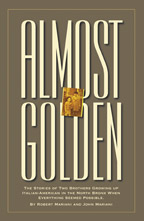 My
newest book, written with my brother Robert Mariani, is a memoir of our
years growing up in the My
newest book, written with my brother Robert Mariani, is a memoir of our
years growing up in the For those of you who don't think of the Robert and I think you'll enjoy this very personal look at our --John Mariani |
 |
 |
 |
 |
 |
 |
© copyright John Mariani 2008

